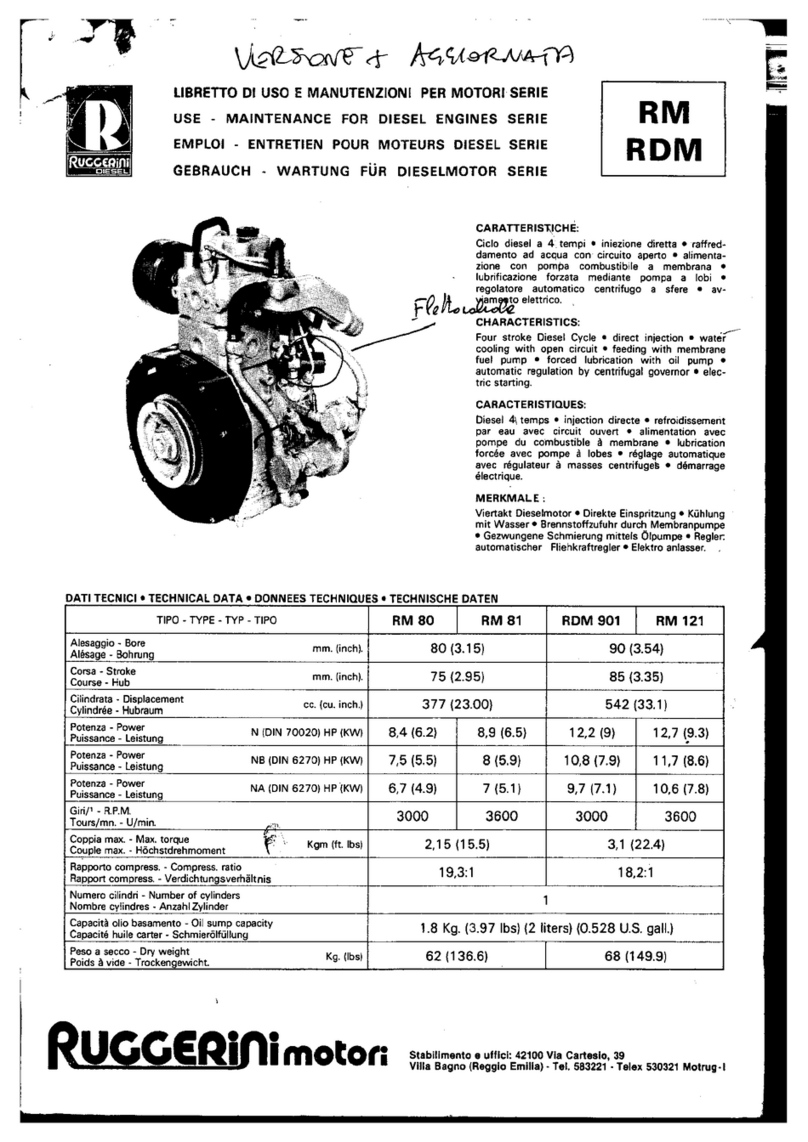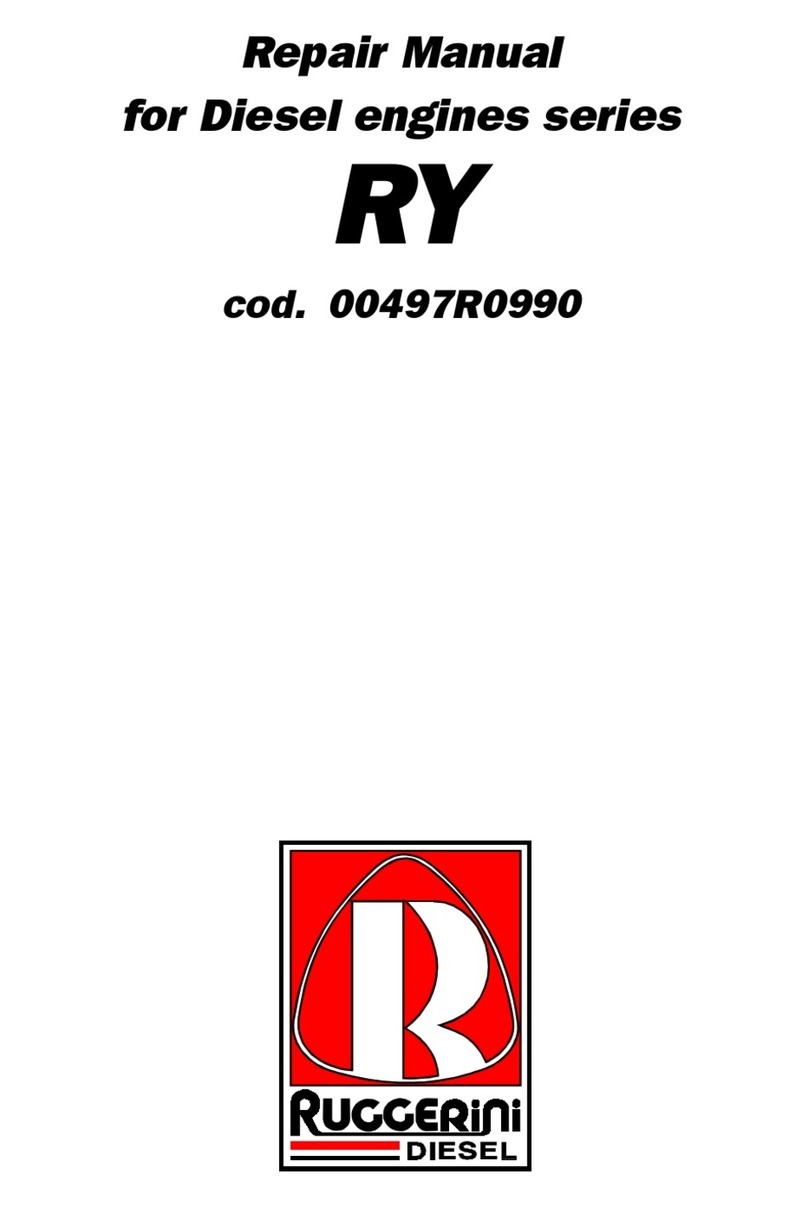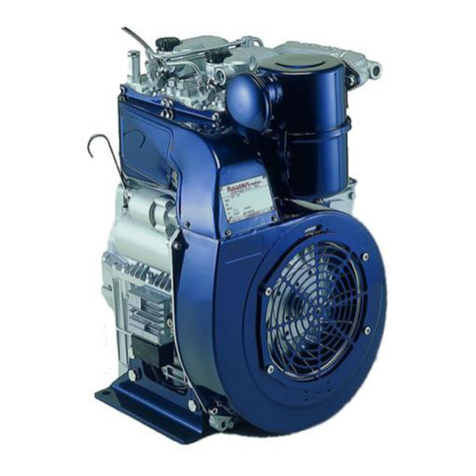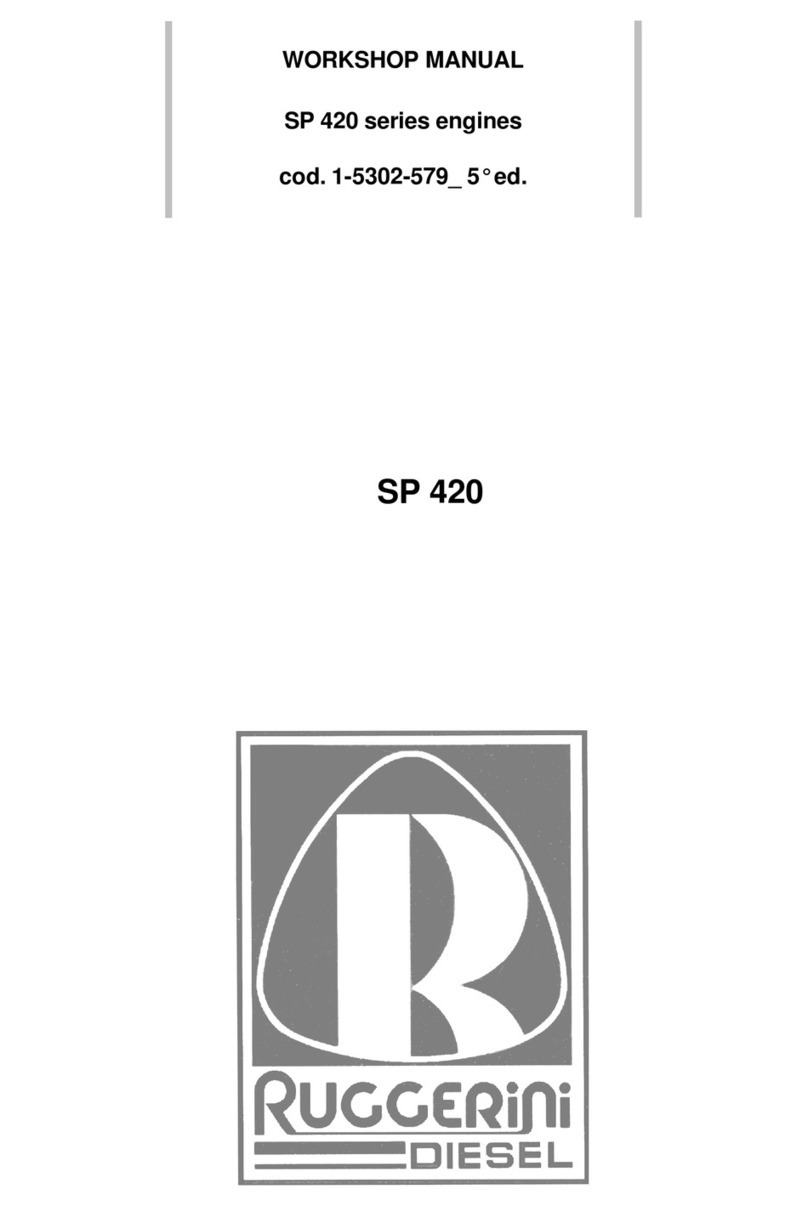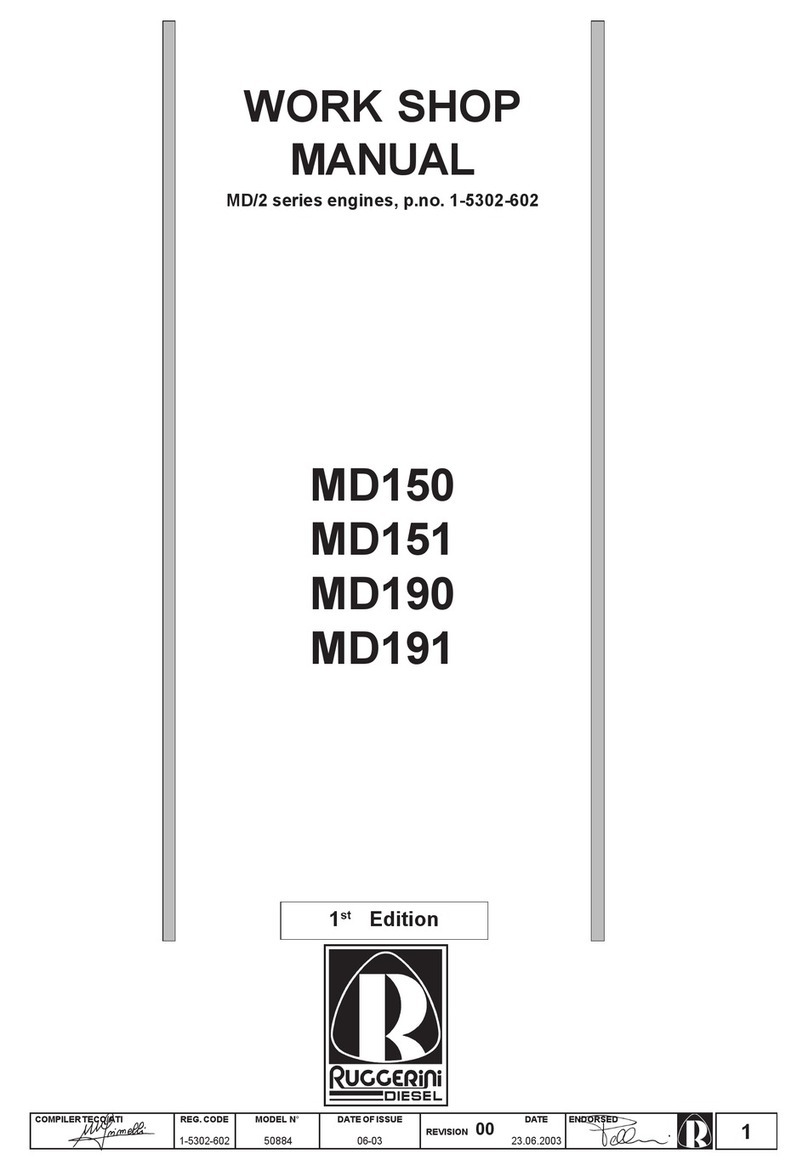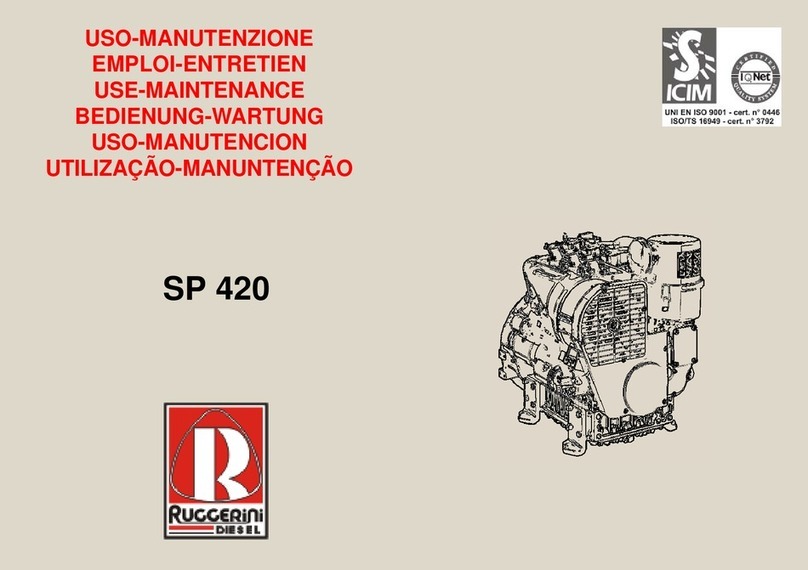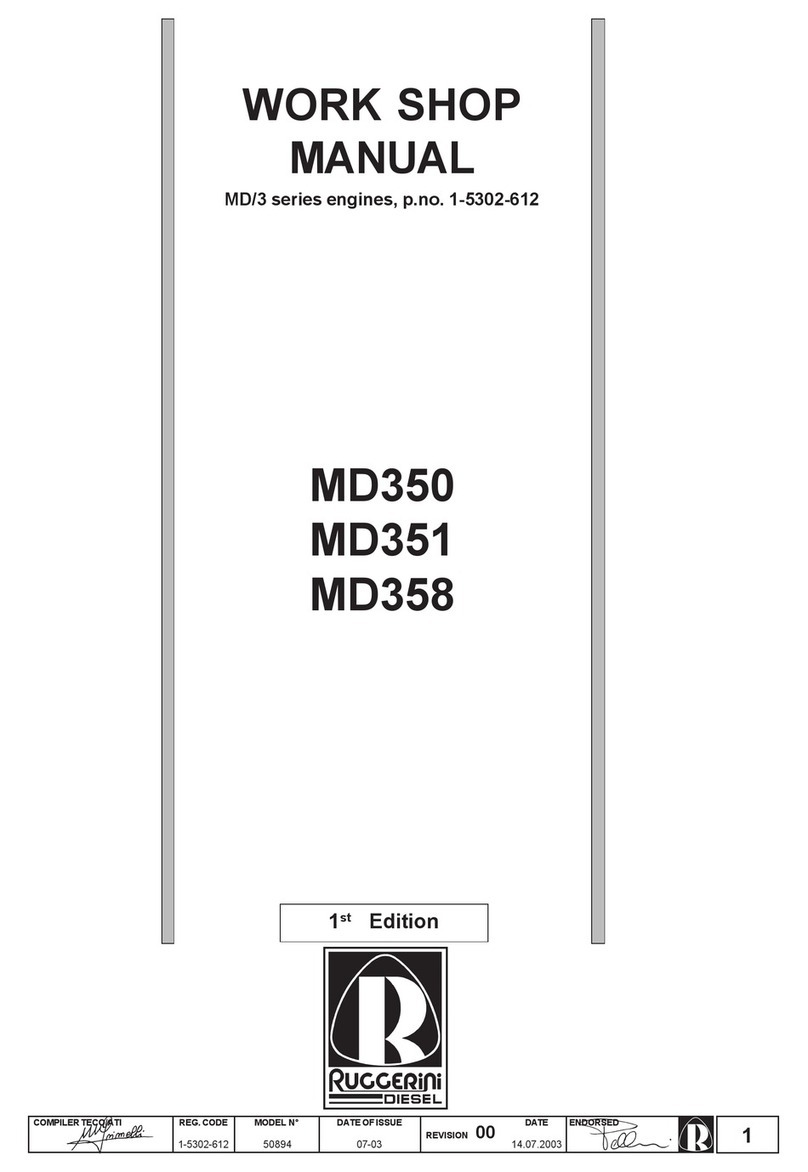9
COMPILERTECO/ATI ENDORSEDDATE
29.02.2004
REG.CODE
1-5302-633
MODEL N°
51074
DATEOFISSUE
02-04 REVISION 00
IISAFETY AND WARNING DECALS - SAFETY INSTRUCTIONS
•Theenginemustnotoperateinplacescontaininginflammablematerials,inexplosiveatmospheres,wherethereisdust
that can easily catch fire unles specific, adequate and clearly indicated precautions have been taken and have been
certifiedforthemachine.
•Toprevent firehazards,always keepthe machineatleast onemeterfrom buildingsor fromothermachinery.
•Children and animals must be kept at a due distance from operating machines in order to prevent hazards deriving
from their operation.
•Fuel is inflammable. The tank must only be filled when the engine is off. Thoroughly dry any spilt fuel and move the
fuel container away along with any rags soaked in fuel or oil. Make sure that no soundproofing panels made of
porous material are soaked in fuel or oil. Make sure that the ground or floor on which the machine is standing has
not soaked up any fuel or oil.
•Fully tighten the tank plug each time after refuelling. Do not fill the tank right to the top but leave an adequate space
for the fuel to expand.
•Fuel vapour is highly toxic. Only refuel outdoors or in a well ventilated place.
•Do not smoke or use naked flames when refuelling.
•The engine must be started in compliance with the specific instructions in the operation manual of the engine and/or
machine itself. Do not use auxiliary starting aids that were not installed on the original machine (e.g. Startpilot’).
•Before starting, remove any tools that were used to service the engine and/or machine. Make sure that all guards
have been refitted.
•During operation, the surface of the engine can become dangerously hot. Avoid touching the exhaust system in
particular.
•Before proceeding with any operation on the engine, stop it and allow it to cool. Never carry out any operation whilst
the engine is running.
•The coolant fluid circuit is under pressure. Never carry out any inspections until the engine has cooled and even in
this case, only open the radiator plug or expansion chamber with the utmost caution, wearing protective garments
and goggles. If there is an electric fan, do not approach the engine whilst it is still hot as the fan could also start
operating when the engine is at a standstill. Only clean the coolant system when the engine is at a standstill.
•When cleaning the oil-cooled air filter, make sure that the old oil is disposed of in the correct way in order to
safeguard the environment. The spongy filtering material in oil-cooled air filters must not be soaked in oil. The
reservoir of the separator pre-filter must not be filled with oil.
•The oil must be drained whilst the engine is hot (oil T ~ 80°C). Particular care is required to prevent burns. Do not
allow the oil to come into contact with the skin.
•Make sure that the drained oil, the oil filter and the oil it contains are disposed of in the correct way in order to
safeguard the environment.
•Pay attention to the temperature of the oil filter when the filter itself is replaced.
•Only check, top up and change the coolant fluid when the engine is off and cold. Take care to prevent fluids
containing nitrites from being mixed with others that do not contain these substances since "Nitrosamine",
dangerous for the health, can form. The coolant fluid is polluting and must therefore be disposed of in the correct
way to safeguard the environment.
•During operations that involve access to moving parts of the engine and/or removal of rotating guards, disconnect
and insulate the positive wire of the battery to prevent accidental short-circuits and to stop the starter motor from
being energized.
•Only check belt tension when the engine is off.
•Only use the eyebolts installed by Ruggerini to move the engine. These lifting points are not suitable for the entire
machine; in this case, the eyebolts installed by the manufacturer should be used.
